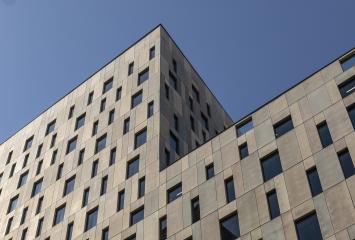How automation is applied in offices
We saw it in a previous article in this blog: automation, the technology aimed at automating spaces, provides offices with a long list of benefits: comfort, convenience, optimization of energy management, reduction of the carbon footprint, improved air quality, systems integration, predictive maintenance, improved individual and company productivity, increased safety levels... It is a step forward. A transformation of the office ecosystem that has a positive impact on both the people who occupy it and the organization itself. One with more and more room for customization. At the end of the day, there are many different automation applications on the market today. It is important that each company chooses the ones that are best suited to its circumstances, needs and objectives. Let's take a look at the most prominent ones.
Lighting
One of the areas that comes to mind most quickly when thinking about automation. Nowadays, with the technologies available, it is no longer necessary to get up to press a switch to turn the lights on or off: automation systems allow you to do this by voice or with a few simple taps to avoid unnecessary trips and distractions. In addition, they also enable partial switching off, informative flickering or automatic dimming of the lighting according to natural light. A perfect ally of energy efficiency.
Climate control
As it is the automation applied to air conditioning as well. Among other functions, these systems perform automatic shutdown in cases of prolonged absence, warning or shutdown when office doors and windows are opened, and time or temperature programming. A series of actions that result in lower energy consumption and, consequently, in a reduction of carbon dioxide emissions. In this sense, an office with automation is an office that is more sustainable, more responsible and more respectful of the planet. A modern office.
Security
Automation applications for security and access control, such as smart alarms, have been a real revolution. In addition to notifying office managers in the event of unidentified movements once the office is closed, these alarms allow remote, real-time monitoring by means of images, presence simulation through the periodic switching on of lights, automatic fire detection or automatic detection of gas or water leaks from a control center. A source of peace of mind for companies.
Electricity
Automated lighting and air conditioning applications, as we have seen, generate savings in electricity consumption and consequently in the economic cost of the electricity bill. But they are not the only ones. Smart plugs with Wi-Fi connectivity, which can be activated and deactivated remotely to eliminate so-called phantom consumption, also result in significant savings. In addition, they can be programmed to create automatic time slots for use and disuse, and consumption can be monitored.
Other applications
Beyond these four main categories, there are many other office automation devices. Among the most relevant are automated curtains, plant watering automation systems, voice-controlled smart speakers, or office access management systems using biometric markers such as fingerprints. Automation, together with natural light, the presence of natural materials and plants and human-centric design, are the basis of the office of the future. An office that, at Colonial, always at the forefront, we have been building and making available to companies for many years.

